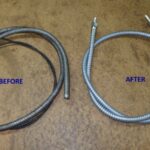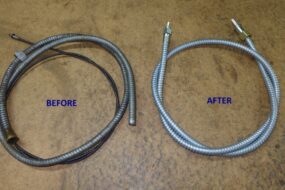Changing a tire is an essential skill for every driver. Whether you encounter a flat tire on the road or need to swap out your tires for seasonal changes, knowing how to do it safely and efficiently can save you time and hassle. Here’s a comprehensive guide on how to change a tire.
What You’ll Need
Before you start, make sure you have the following tools and equipment:
- Spare tire
- Jack
- Lug wrench
- Wheel chocks (or large rocks)
- Safety gloves (optional)
- Flashlight (if working in low light)
Step-by-Step Instructions
- Prepare for Safety
- If you’re on the road, find a safe, flat area to pull over. Turn on your hazard lights to alert other drivers.
- Apply the parking brake to prevent the vehicle from rolling.
- Place wheel chocks or large rocks behind the wheels opposite the flat tire to secure the vehicle.
- Loosen the Lug Nuts
- Using the lug wrench, turn the lug nuts counterclockwise to loosen them. It’s easier to do this while the tire is still on the ground. Loosen them enough so that they can be removed by hand later, but do not remove them yet.
- Lift the Vehicle
- Position the jack under the vehicle’s designated lifting point (consult your owner’s manual if you’re unsure).
- Carefully raise the vehicle until the flat tire is off the ground. Ensure the jack is stable and the vehicle is securely lifted.
- Remove the Lug Nuts and Tire
- Once the vehicle is elevated, completely remove the loosened lug nuts by hand and set them aside in a safe place.
- Carefully pull the flat tire straight off the wheel hub and set it aside.
- Install the Spare Tire
- Align the spare tire with the wheel hub and push it onto the hub until it’s snug against it.
- Hand-tighten the lug nuts onto the wheel studs, securing the spare tire in place. Ensure the nuts are in the correct order to distribute pressure evenly (generally, it’s best to work in a crisscross pattern).
- Lower the Vehicle
- Slowly lower the vehicle back to the ground using the jack. Once the vehicle is stable on the ground, remove the jack.
- Tighten the Lug Nuts
- With the vehicle back on the ground, use the lug wrench to tighten the lug nuts securely. Again, use a crisscross pattern to ensure even tightening. Make sure they are tight enough to prevent any movement.
- Store the Flat Tire and Tools
- Place the flat tire, jack, and lug wrench back in your vehicle. Ensure everything is secure.
- Check Your Tire Pressure
- If you have a tire pressure gauge, check the spare tire’s pressure before driving away. If it’s a full-size spare, it should be at the recommended PSI. If it’s a temporary spare (often called a “donut”), make sure to follow the manufacturer’s guidelines for maximum speed and distance.
Final Thoughts
Changing a tire can be straightforward if you follow these steps. It’s a valuable skill that can save you time and stress in unexpected situations. Always consult your vehicle’s owner’s manual for specific instructions and safety tips related to your car model. With practice, you’ll feel more confident handling tire changes whenever necessary!







